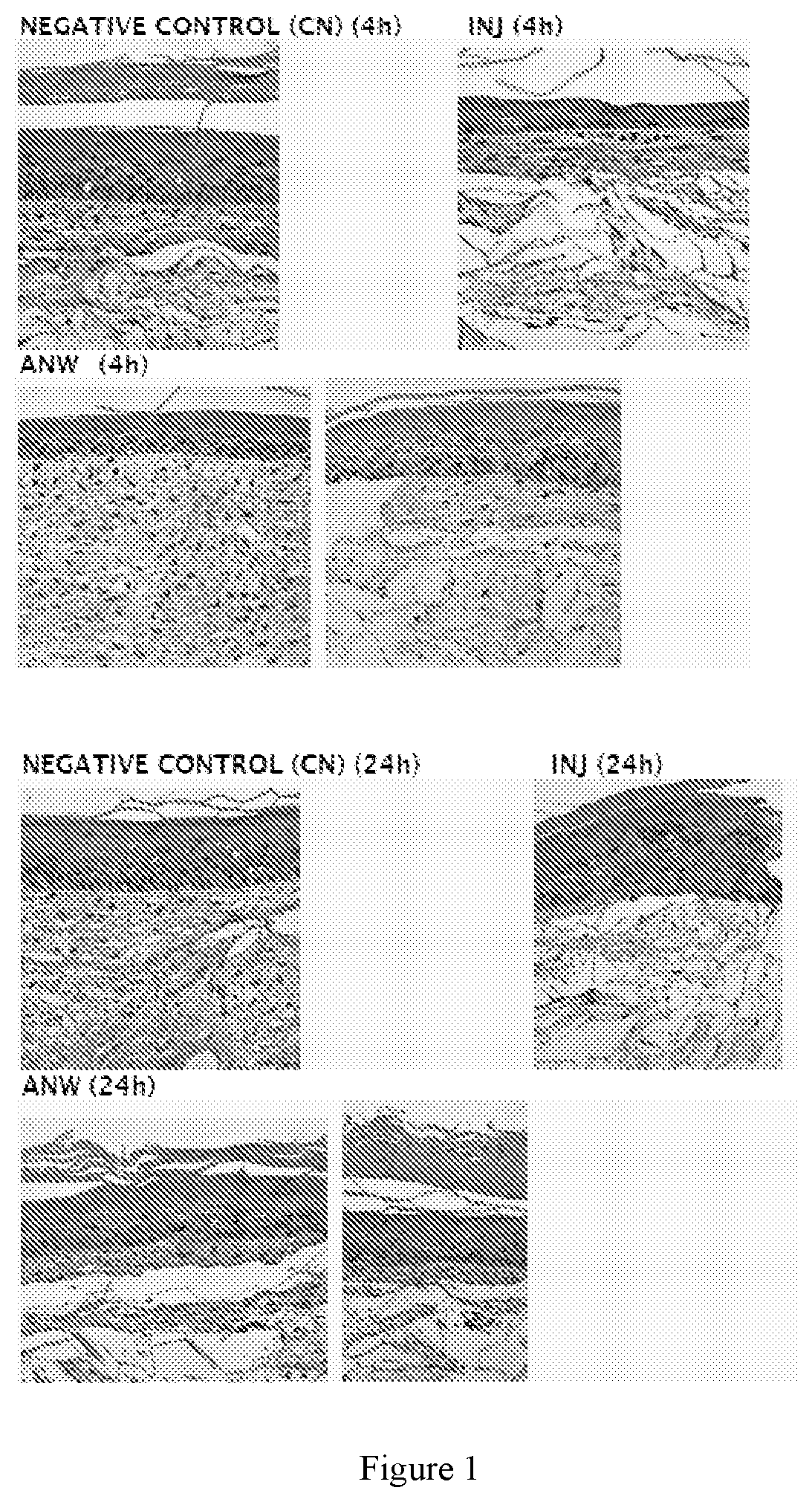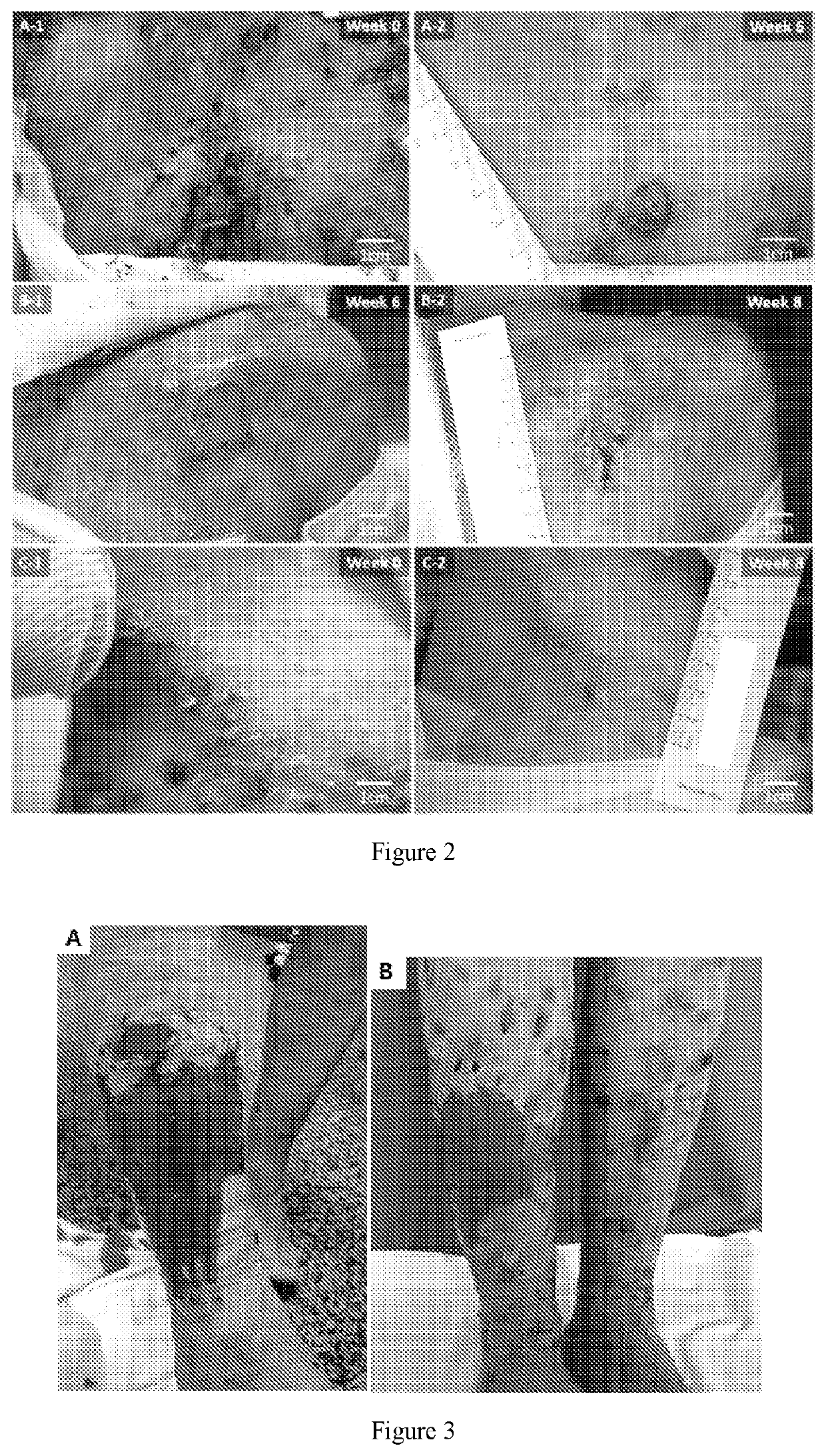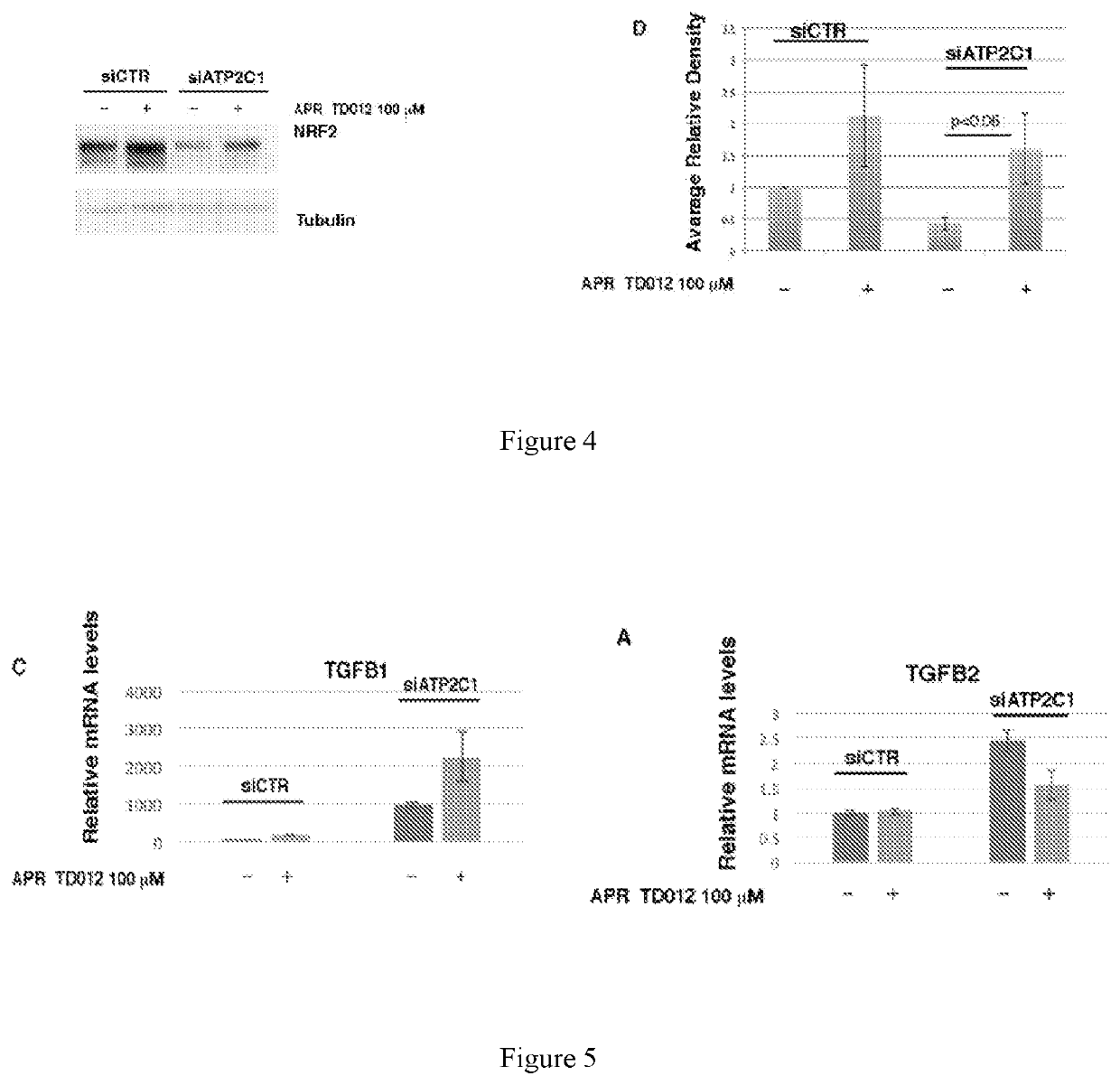Therapeutic uses of oxidising hypotonic acid solutions
a technology of oxidising hypotonic acid and therapeutic use, which is applied in the direction of antibacterial agents, drug compositions, chlorine active ingredients, etc., can solve the problems of eb, internal linings and organs are also affected, and certain types of eb can be fatal
- Summary
- Abstract
- Description
- Claims
- Application Information
AI Technical Summary
Benefits of technology
Problems solved by technology
Method used
Image
Examples
example 1
on of HClO Solutions of the Present Invention
[0123]The Product is a hypotonic, acidic oxidizing solution containing Hypochlorous Acid (HClO) obtained through a Sodium Chloride solution electrolysis process. This process yields a hypotonic solution defined in terms of (i) pH, (ii) Oxidative Reduction Potential (ORP), (iii) free chlorine species and (iv) purity of HClO having long term stability properties. Methods for producing the Product are described in WO / 2008 / 131936 and WO / 2007 / 048772, the disclosure of which are hereby incorporated by reference.
[0124]Specifications for hypotonic, acidic oxidizing solution containing Hypochlorous Acid (HClO) are given below in TABLE 1:
TABLE 1PropertySpecificationTonicityHypotonic (Chloride content less than 200 mg / l)pH2.50-3.00Oxidation Reduction 1000-1300mVPotential (ORP)Free chlorine* content40-100 mg / lFree chlorine speciesHClO is not less than 95% of Free Chlorine, ClO− is 0%, Cl2 is less than 5%*The Free Chlorine species are Chlorine (Cl2). ...
example 2
ons for Use
[0127]Suitable instructions for using the solutions of the current invention, including the product of Example 1, are given below:
[0128]The moist layer left on the lesion after administration accounts for the creation of an ideal microenvironment to sustain the physiological healing process thanks to three features of the solution (highly pure HClO, pH1000 mV).
[0129]The solution contains hypochlorous acid (HClO), which acts as an antimicrobial agent and a preservative by inhibiting the growth of microorganisms within the solution, and preventing contamination by exerting a local ancillary antimicrobial effect on the lesion surface.
[0130]HClO, characterized by a neutral charge, penetrates the negatively charged bacterial membrane very efficiently where it exerts its antimicrobial action.
[0131]pH<3.0 affects bacterial growth by creating an environment unfavorable to bacterial growth. Furthermore, the acid environment promotes tissue oxygenation by the Boh...
example 3
n of Anti-Inflammatory and Tissue Regeneration Properties, with Particular Application to Epidermolysis Bullosa
[0148]The role of hypotonic, acidic oxidizing solution containing Hypochlorous Acid (HClO) (named in this indication as APR TD-011) meeting the specifications in Example 1 has been assessed in an in vitro wound healing model on FT-SKIN to define its mechanism of action and to assess its tissue regeneration properties at epidermal and dermal levels after 4 hours and 24 hours of treatment post-injury with a transcriptional study (qRT-PCR).
Methods:
Test System:
[0149]An experimental in vitro model of wound healing has been developed on a “Full-thickness skin model” (FT-skin) by inducing a reproducible mechanical injury that involves both the epidermal and the dermal compartment, mimicking the different phases of the healing process.
[0150]The Phenion® Full Thickness Skin Model is produced by Henkel (Dusseldorf, Germany, diameter 1.3 cm). In this model, epidermal keratinocytes and...
PUM
| Property | Measurement | Unit |
|---|---|---|
| pH | aaaaa | aaaaa |
| time | aaaaa | aaaaa |
| size | aaaaa | aaaaa |
Abstract
Description
Claims
Application Information
 Login to View More
Login to View More - R&D
- Intellectual Property
- Life Sciences
- Materials
- Tech Scout
- Unparalleled Data Quality
- Higher Quality Content
- 60% Fewer Hallucinations
Browse by: Latest US Patents, China's latest patents, Technical Efficacy Thesaurus, Application Domain, Technology Topic, Popular Technical Reports.
© 2025 PatSnap. All rights reserved.Legal|Privacy policy|Modern Slavery Act Transparency Statement|Sitemap|About US| Contact US: help@patsnap.com



